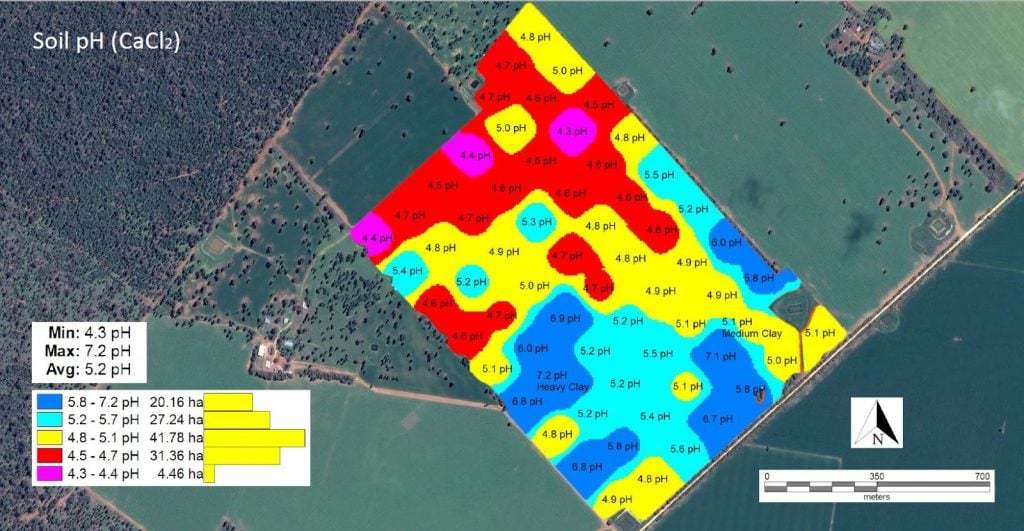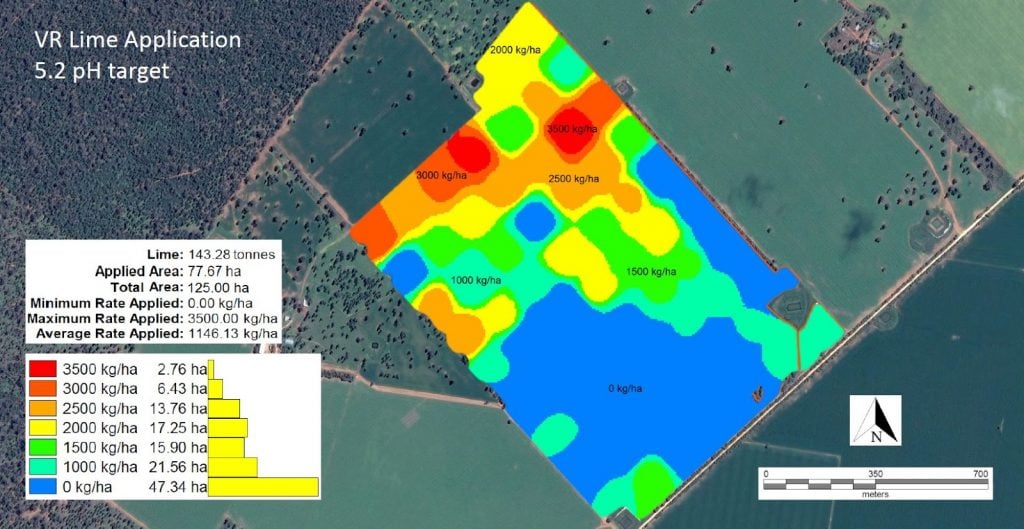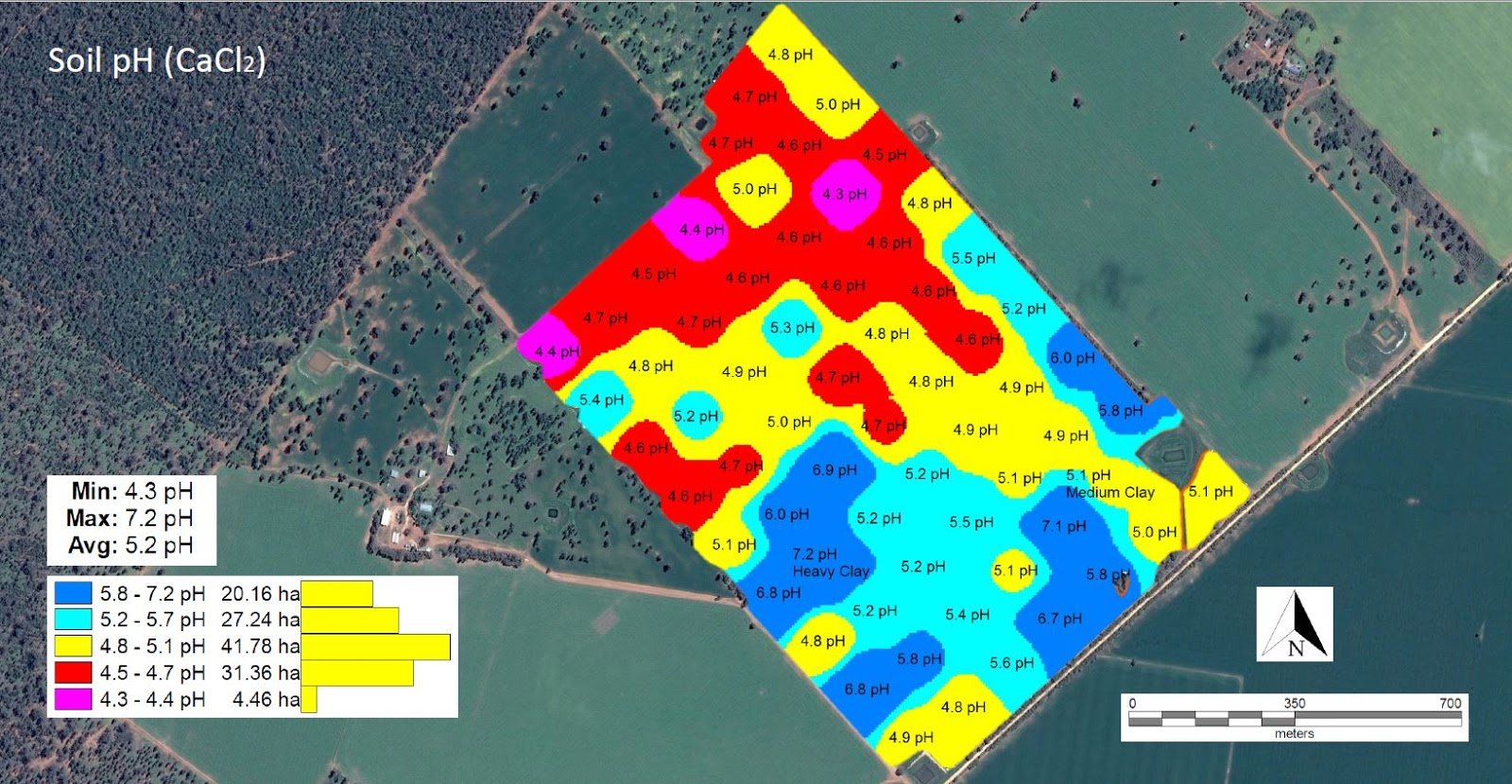Precision agriculture or ‘PA’ can mean very different things. At a recent conference in Canada, it was stated that there are over thirty accepted definitions of ‘precision agriculture’. For the purpose of this article, we will be using a term which defines certain aspects of precision agriculture in cropping systems, ‘Site-Specific Crop Management’ (SSCM).
Site-Specific Crop Management
Site Specific Crop Management is ‘A form of PA whereby decisions on resource application and agronomic practices are improved to better match soil and crop requirements as they vary in the field’.
Importantly, SSCM is about resource allocation and not necessarily about the adoption of new technology on farm. For grain production, this definition provides a goal to achieve an optimisation of production efficiency and grain quality, whilst minimizing environmental impact and risk.
Optimising Production Efficiency
Optimising returns across a field is the main aim of SSCM. However, the yield potential of paddocks in Australia varies greatly. Many soil characteristics (soil type, structure, fertility, condition) play a key role in supporting and constraining production. One way to start looking at the variability within a paddock is to consider a yield map as your ground truth. Moving forward, farm management software can allow a yield map to be converted to a gross margin map by multiplying yield values by crop price and subtracting the variable costs per hectare.
The initial emphasis, therefore, should be on optimising the agronomic response to the manageable input that will have the greatest impact on production and cost. Over time and as each input is addressed, the variability of gross margins within a paddock (although differing slightly with crop type) should be reduced.
The Cost of SSCM
Cost
The cost of obtaining machinery, technology and support varies greatly across the industry and will depend heavily on the degree of adoption, equipment purchased, and the amount of technical support required. Values obtained from Australian and US farms indicate that a simple set-up (i.e. navigation, yield monitoring, variable rate applications) can cost between AUD $5 – 25/ha, with more advanced setups upwards of AUD $60/ha.
Table 1 showcases the purchased cost range for each of the equipment pieces (less annual fees) and technical support required. Annual fees should however also be considered, for example servicing, signal correction costs, repairs and maintenance.
Table 1: Purchased cost range for each of the equipment pieces (less annual fees) and technical support required in implementing Precision Agircultural Systems. Data Source: 2013. Whelan, B., Taylor, J., Precision Agriculture for Grain Productions Systems
| SSCM Item |
Cost Range (A$) |
Potential Use (years) |
Cost for 1000ha annual cropping area (A$/ha/year) |
| Vehicle Navigation | |||
|
Light Bar |
3500 – 5000 | 7 |
0.6 – 0.86 |
| Autosteer |
15000 – 45000 |
7 |
2.57 – 7.71 |
| In-Field Monitoring | |||
| Yield Monitor |
4000 – 6000 |
7 |
0.69 – 1.03 |
| Protein Monitor |
15000 – 25000 |
7 |
2.57 – 4.28 |
| Proximal Crop/Weed Reflectance Sensors (4) |
8000 – 12000 |
7 |
1.37 – 2.06 |
| Data Management Software |
2000 – 4000 |
5 |
0.34 – 0.86 |
| External Monitoring and Consultants | |||
| Remotely Sensed Crop Reflectance Imagery |
0.5 – 10/ha |
1 |
500 – 10 000 |
| Soil EC/Gamma-radiometric survey |
3-5/ha |
25 |
0.12 – 0.2 |
| Soil and crop sampling and analysis |
15 – 200 /sample |
3 |
Depends of Scale |
| Consultant/Analyst |
3 – 15/ha |
1 |
3000 – 15 000 |
| Variable-rate Application | |||
| Variable rate components for air-seeder/spreader |
5000 – 30 000 |
7 |
0.86 – 5.14 |
| Variable rate components for chemical application |
5000 – 15 000 |
7 |
0.86 – 2.57 |
It should be noted that prices associated with SSCM tools are often highly volatile, and can depend on a range of variables including competition and technological advancement. However, in general, costs associated with machinery, technology and support have decreased since their inception. Some add-ons, such as those associated with 3cm GPS accuracy can also incur an ongoing annual subscription cost.
Benefits
Returns on implementing SSCM tools will vary depending on individual farms and individual paddock situations. Fertiliser, seed, chemical and labour normally account for at least two thirds of variable costs on farm.
A more efficient approach to applying these inputs is achieved through a targeted application based on in-field characteristics, and is known as a variable-rate application (VRA). The financial benefits of using VRA are likely to be a mix of a reduction in inputs where fertiliser, chemical and seed are applied at lower rates in some areas, and in an increase in production, where application rates have previously been inadequate.
Example of applying SSCM
Take the example below:
A 125ha paddock in Southern NSW is limed at 2.5 tonnes/ha every four years. Lime is AUD $55/tonne spread. In order to get a variable rate, the paddock must be grid soil sampled. This process costs $15/ha, and includes the mapping and variable-rate prescription file that is uploaded to the spreader (Figure 1 and 2).

Figure 1. pH results map developed from 2ha-grid soil sampling, testing and processing. Source Precision Agriculture Pty Ltd.

Figure 2. Variable rate application map developed from 2ha-grid soil sampling, testing and processing. Source Precision Agriculture Pty Ltd.
Results of grid sampling indicate large proportions of the paddock, approximately 37%, having non-limiting soil pH levels, when trying to achieve an overall pH of at least 5.2. Conversely, there are also areas that are highly acidic. The illustrated results show that a traditional/blanket lime application would be inefficient at raising much of the highly acidic soils, and be wasteful on areas with a soil pH of above 5.2.
When looking at changes in inputs, inclusive of the price associated with mapping, a reduction in the total lime applied resulted in a saving of AUD$7,433.20 (Table 2).
Table 2. Lime savings across farm
Table 2 highlights the cost-benefit of VR liming for paddock shown in figure 1 and 2. Paddock is broken down into zones based on pH results, showing tonnes and prices associated with both blanket/conventional approaches and VR. Prices associated with mapping and lime may vary. Process assumes contract spreader with VR capability at no extra cost.
While the process of liming is used in this example, the general principles associated with managing in-paddock variability applies to most inputs. Common variable-rate applications include urea, phosphate, potash, gypsum and lime.
Data sources to generate variable rate applications can also differ. In-season remote sensing, soil apparent electrical conductivity and yield mapping can all form the basis of managing paddocks by zones.
It is also worth considering the value of SSCM benefits that can be difficult to quantify. This can include an increase in:
- speed of operations
- improved timeliness
- improved ease and efficacy
- increase farm value with spatial recordings
- less runoff or erosion.
Equally the potential financial benefits of variable-rate fertiliser and ameliorants will vary between farms and fields and be dependent on the amount of variation in soil type, nutrient reserves, fertiliser and ameliorant cost as well as crop price received.
Summary
Site-specific crop management (SSCM) is the process of managing the natural variability of soils in cropping systems. It’s implementation is often driven by a desire for growers to minimise wastage, and optimise production within a paddock.
The adoption of SSCM has inherent capital and variable costs associated with new technology as well as increased time and consideration. This is particularly the case in variable-rate applications, where uniformly managed paddocks need to be zoned depending on the target nutrient, ameliorant or seed.
The benefits of this approach, and other SSCM tactics will vary across crops, paddocks, farms and landscapes. While financial benefits can be the driver for its adoption, more accurate targeting and rates of inputs can inherently have a positive environmental effect.
Further Information
For a more in-depth look at SSCM and PA in Cropping a great book is:
Whelan, B. and Taylor, J., 2013. Precision agriculture for grain production systems. CSIRO publishing.
GRDC Articles:
- The Economics of Precision Agriculture
- An Economic Analysis of the GRDC Investment in Precision Agriculture Variable Rate Technology (VRT)
Visit the Precision Agriculture Website
Acknowledgements
Alex was part of the Agronomist Development Program, a partnership between the GRDC and the Victorian Government, through Agriculture Victoria and the Regional Research Agronomy Program (DAV00143).
Alex spent 18 months working with both agronomy researchers and precision agriculture service providers, Landmark and Precision Agriculture Pty. Ltd


